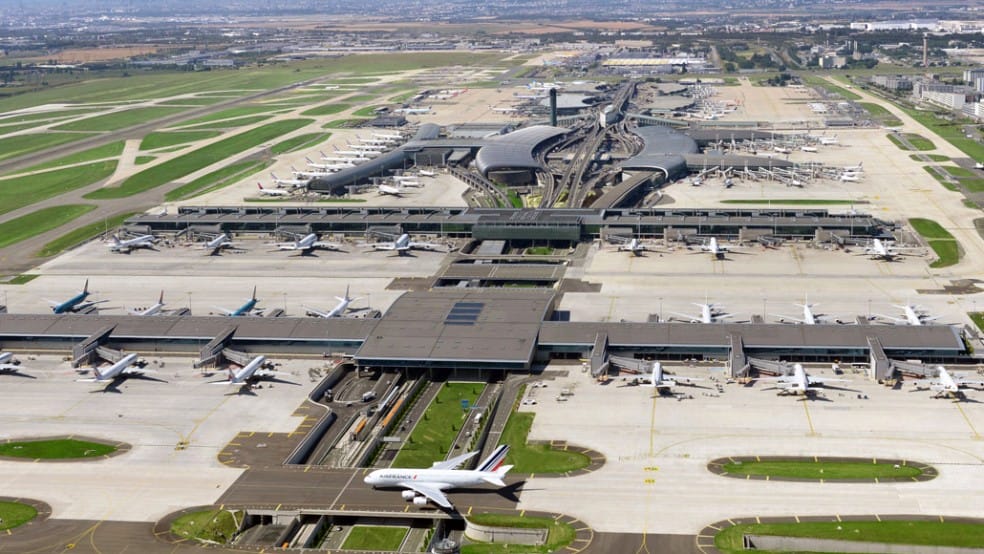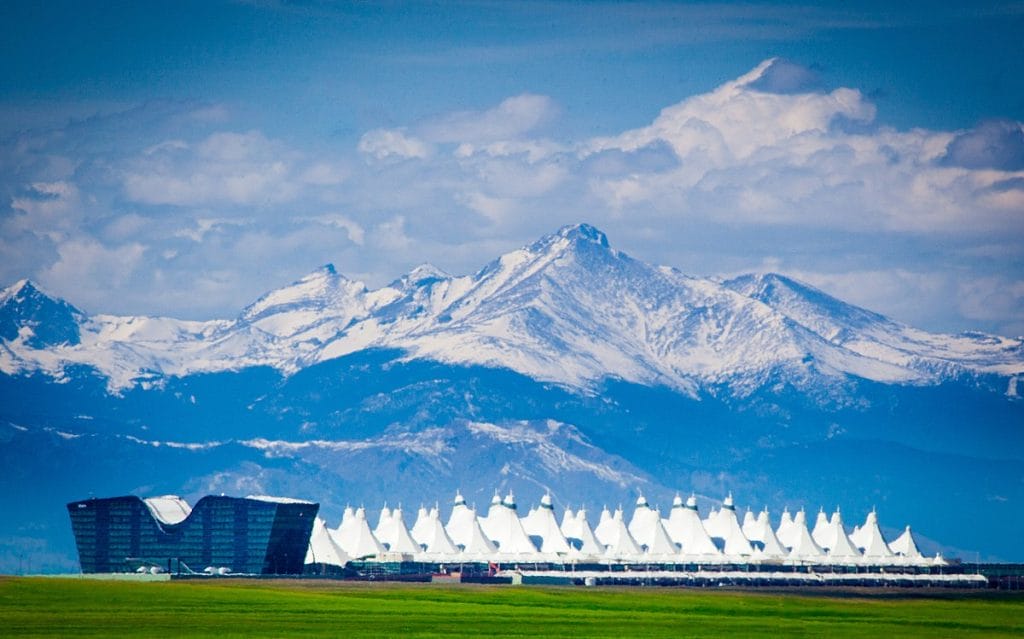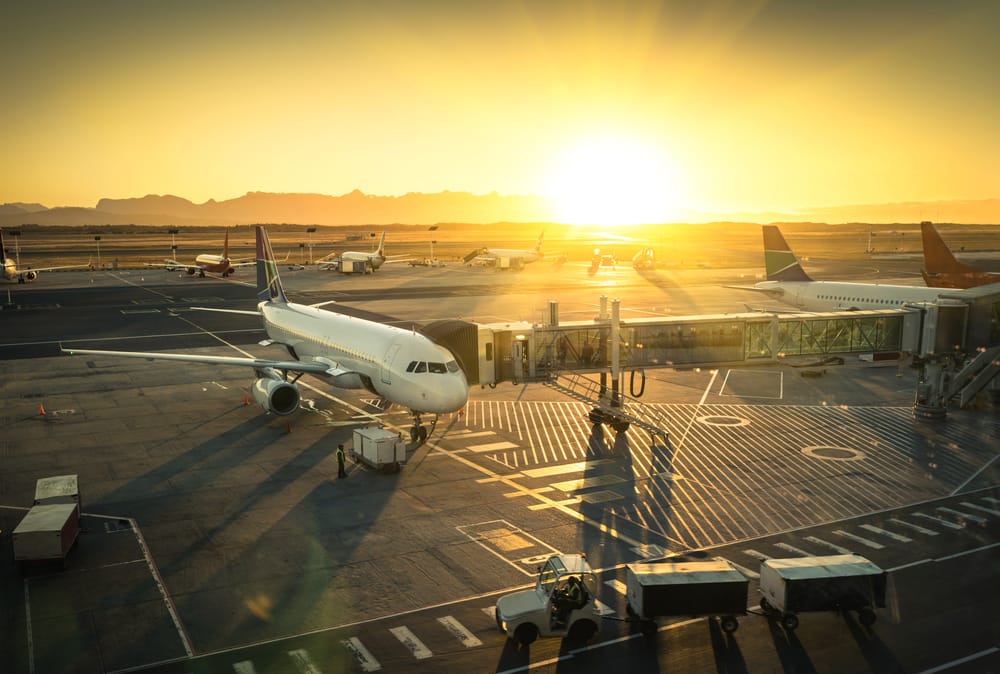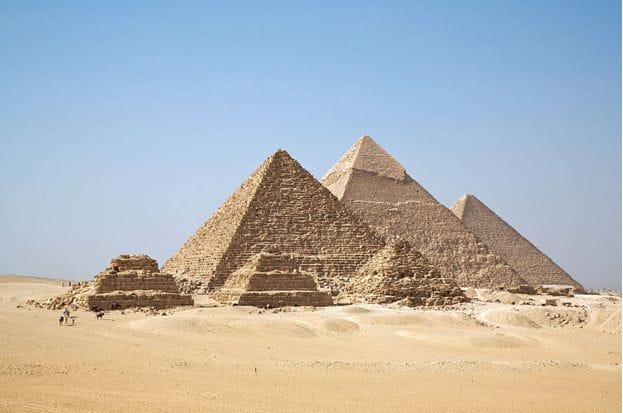Airports are fundamental to modern day travel, offering the opportunity for passengers and trade alike to enter far away destinations in a relatively short space of time. The immense logistics that air travel requires means that airports are made up of multiple terminals, building, runways and landing areas, and this often means taking up a huge amount of space. However, some are considerably bigger than others. Take a look below at the world’s 15 largest airports, listed in descending order by surface area. How many of these airports have you visited?
1 – King Fahd International Airport – Dammam, Saudi Arabia (77,600 hectares)
By far the world’s largest airport, King Fahd International Airport is situated in Dammam, Saudi Arabia, and is nearly 6 times the size of the next biggest airport (Denver International Airport, USA). It is so large, in fact, that it has a greater surface area than its neighbouring country, Bahrain. The airport has multiple designated terminals, including a huge 177,000 square foot dedicated to the royal terminal, specially reserved for members of the royal family, senior government officials and other foreign officials. It also has a mosque built directly on top of the gigantic carpark, which is iconic in aerial photographs of the airport.
2 – Denver International Airport – Denver, USA (13,571 hectares)
The second largest airport in the world is Denver International Airport, making it the largest airport in the USA. It boasts awards for the Best Run Airport from TIME magazine, alongside the longest public use runway in the US.
3 – Dallas/Fort Worth International Airport – Dallas, USA (6,963 hectares)
Following on from Denver, Dallas/Fort Worth International Airport takes the place as the third largest airport in the world, and the second largest in the USA. However, taking up 6,963 hectares of space, it is just over half the size of Denver International airport, truly highlighting the size of both Denver International Airport and King Fahd International Airport at the top two spots. Dallas/Fort Worth is known as one of the busiest airports in the world
4 – Orlando International Airport – Orlando, USA (5,383 hectares)
Another hugely busy airport is Orlando International, holding the title for the busiest airport in Florida and a strong contender for the busiest airport in the USA. It primarily serves the Orlando district in central Florida, which attracts a huge amount of visitors every year, thanks to it’s famous theme parks.
5 – Washington Dulles International Airport – Washington, D.C., USA (4,856 hectares)
Named after the Secretary of State under President Eisenhower, John Foster Dulles, this sizable airport is situated in Virginia, but serves the area around Washington D.C. It is home to 135 gates and flies to over 100 destinations.
6 – George Bush Intercontinental Airport – Houston, USA (4,451 hectares)
Another airport in Houston, Texas is the George bush Intercontinental Airport. Settling at 3 spots below its counterpart, Dallas/Fort Worth, its impressive 4,451 hectares serves the greater metropolitan area of Houston and was renamed after President George. W. Bush. It is the 47th busiest airport in the world, and the 14th busiest in the United States.
7 – Shanghai Pudong International Airport – Shanghai, China (3,988 hectares)
One of two main airports in Shanghai and a fundamental part of the East Asian aviation hub, the Shanghai Pudong International Airport covers 3,988 hectares. It is the main hub for China Eastern Airlines and Shanghai Airlines.
8 – Cairo International Airport – Cairo, Egypt (3,625 hectares)
Cairo International Airport is the busiest airport in Egypt and the main aviation hub for EgyptAir, EgyptAir Express and Nile Air, as well as several other airlines. It is the second busiest airport in Africa, beaten only by South Africa’s main airport in Johannesburg.
9 – Suvarnabhumi Airport – Bangkok, Thailand (3,240 hectares)
This airport is one of the largest in South-East Asia and the 17th busiest airport in the world. It handled a huge 60 million passengers in 2017 and has proved as a hugely popular place for people to take and upload pictures to social media. It is the main hub for Thai Airways International, Thai Smile Airways, and Bangkok Airlines.
10 – Paris Charles de Gaulle Airport – Paris, France (3,237 hectares)
Paris Charles de Gaulle Airport is also known as Roissy Airport . It is the largest international airport in France and Europe, and the second busiest airport in Europe. It’s located to the north-east of Paris and is named after a previous President of France, Charles de Gaulle.

11 – Madrid-Barajas Airport – Madrid, Spain (3,050 hectares)
Just behind the Charles de Gaulle Airport in France, Madrid Barajas Airport is the second largest airport in Europe and serves the areas surrounding the Spanish capital. In 2018, 57.9 million passengers used the airport, making it the busiest airport in Spain, and Europe’s sixth busiest.
12 – O’Hare International Airport – Chicago, USA (2,913 hectares)
The O’Hare International Airport is located to the North-west of Chicago, Illinois and has non-stop flights to 228 destinations around the world. It is unusual in the fact that it serves more than one of the three major international airlines, being home to both United Airlines and American Airlines. Since its opening in 1944 it has seen some modernisations in recent years, particularly to the airfield.
13 – Salt Lake City International Airport – Salt Lake City, USA (2,830 hectares)
Salt Lake City International Airport in Utah is the closest commercial airport for more than 2.5 million people and provides a smooth 30-minute driving distance to over 1.3 million jobs. It’s a major gateway to the Intermountain West region of the United States and has just under 400 airline departures each day.
14 – Amsterdam Airport Schiphol – Amsterdam, The Netherlands (2,787 hectares)
Commonly referred to as Schiphol airport, this airport is the primary International airport for The Netherlands located around 9 kilometres south-west of Amsterdam. It’s an extremely busy airport, taking the title of the 3rd busiest airport in Europe in terms of the amount of passengers using it each year. In 2017, a huge total of 68.5 million passengers travelled through the airport. Unusually, it only has one singular terminal, but it is separated into 3 separate departure halls.
15 – Frankfurt Airport – Frankfurt, Germany (2,300 hectares)
With 4 runways and 2 passenger terminals,this major international airport in Germany has the capacity to be used by 65 million passengers per year. It is the fourth busiest airport in Europe, in terms of passenger traffic. It is a hub for Lufthansa and associated airlines, along with Condor and AeroLogic.
16 – Toronto Pearson International Airport – Toronto, Canada Size: 2,800 hectares
Toronto Pearson International Airport, strategically located in Toronto, stands as Canada’s primary international gateway and its largest airport in terms of land and operations. Covering an expansive 2,800 hectares, this airport is not just an aviation hub but a significant employer in the region, reflecting the city’s bustling economic activity and its central role in North American aviation.
17 – Indira Gandhi International Airport – Delhi, India Size: 2,700 hectares
Nestled in the heart of India’s capital, Delhi, the Indira Gandhi International Airport sprawls across approximately 2,700 hectares. Named after the nation’s former prime minister, this airport is a symbol of India’s rapid modernization and growth in the aviation sector. Serving as a significant hub for flights across Asia, it merges traditional Indian aesthetics with state-of-the-art facilities.
18 – Haneda Airport – Tokyo, Japan Size: 2,630 hectares
Haneda Airport, one of Tokyo’s iconic airports, stretches over about 2,630 hectares, reinforcing Japan’s reputation for expansive and efficient infrastructural prowess. Serving the Greater Tokyo Area, Haneda offers both domestic and international flights, acting as a crucial entry and exit point for Japan’s sprawling metropolis. With its punctual services and modern amenities, it remains a testament to Japan’s dedication to perfection and functionality in aviation.
19 – Atatürk Airport – Istanbul, Turkey Size: 2,500 hectares (closed for commercial flights)
Though now closed for commercial flights, Istanbul’s Atatürk Airport still remains etched in the memories of many travelers. Covering a vast 2,500 hectares, it once served as a pivotal hub connecting Europe and Asia. Named after Mustafa Kemal Atatürk, the founder of modern Turkey, the airport’s size and previous bustling operations remain a testament to Istanbul’s historic role as a bridge between two continents.
20 – Munich Airport – Munich, Germany Size: 2,500 hectares
Sitting in the heart of Bavaria, the Munich Airport spans a sizeable 2,500 hectares and acts as Germany’s second busiest airport. Renowned for its efficiency, modern architecture, and passenger-friendly amenities, it solidifies Germany’s position in the European and global aviation network. The airport seamlessly blends technological advancements with passenger comfort, making it a favorite for travelers across the world.
21 – Sydney Kingsford Smith Airport – Sydney, Australia Size: 2,200 hectares
Located in the picturesque city of Sydney, the Kingsford Smith Airport occupies roughly 2,200 hectares. As Australia’s premier international gateway, it offers a unique blend of top-notch facilities with panoramic views of Australia’s coastline. Serving a diverse range of Pacific routes, this airport stands as a testament to Australia’s robust aviation sector and its connection with the global community.
The 21 Largest Airports by Land Area Table
Airports:
| # | Airport Name | Location | Flag | Description | Surface Area (km²) | Surface Area (mi²) |
|---|---|---|---|---|---|---|
| 1 | King Fahd International Airport | Dammam, Saudi Arabia | 🇸🇦 | One of the largest airports in the world by surface area. | 780 | 301 |
| 2 | Denver International Airport | Denver, USA | 🇺🇸 | Known for its iconic tent-like roof design. | 135.7 | 52.4 |
| 3 | Dallas/Fort Worth International Airport | Dallas, USA | 🇺🇸 | One of the busiest airports in the world. | 69.6 | 26.9 |
| 4 | Orlando International Airport | Orlando, USA | 🇺🇸 | Features a unique airside/landside terminal design. | 53 | 20.5 |
| 5 | Washington Dulles International Airport | Washington D.C., USA | 🇺🇸 | Named after John Foster Dulles, the 52nd Secretary of State. | 52.6 | 20.3 |
| 6 | George Bush Intercontinental Airport | Houston, USA | 🇺🇸 | Named after George H.W. Bush, the 41st President of the United States. | 40.5 | 15.6 |
| 7 | Beijing Daxing International Airport | Beijing, China | 🇨🇳 | Known for its starfish-shaped terminal. | 47 | 18.1 |
| 8 | Shanghai Pudong International Airport | Shanghai, China | 🇨🇳 | One of the busiest airports in mainland China. | 40 | 15.4 |
| 9 | Cairo International Airport | Cairo, Egypt | 🇪🇬 | The second busiest airport in Africa. | 36.3 | 14 |
| 10 | Suvarnabhumi Airport | Bangkok, Thailand | 🇹🇭 | Known for its beautiful, unique architecture. | 32.4 | 12.5 |
| 11 | Charles de Gaulle Airport | Paris, France | 🇫🇷 | Named after Charles de Gaulle, a former President of France. | 32.4 | 12.5 |
| 12 | O’Hare International Airport | Chicago, USA | 🇺🇸 | One of the busiest airports in the world. | 30.9 | 11.9 |
| 13 | Salt Lake City International Airport | Salt Lake City, USA | 🇺🇸 | Recently underwent a major expansion and renovation. | 31 | 12 |
| 14 | Madrid-Barajas Adolfo Suárez Airport | Madrid, Spain | 🇪🇸 | Named after Adolfo Suárez, the first Prime Minister of Spain post-Franco. | 30.5 | 11.7 |
| 15 | Toronto Pearson International Airport | Toronto, Canada | 🇨🇦 | The busiest airport in Canada. | 28 | 10.8 |
| 16 | Indira Gandhi International Airport | Delhi, India | 🇮🇳 | Named after Indira Gandhi, a former Prime Minister of India. | 27 | 10.4 |
| 17 | Haneda Airport | Tokyo, Japan | 🇯🇵 | One of the two primary airports serving the Greater Tokyo Area. | 26.3 | 10.1 |
| 18 | Atatürk Airport (closed for commercial flights) | Istanbul, Turkey | 🇹🇷 | Named after Mustafa Kemal Atatürk, the founder of the Republic of Turkey. | 25 | 9.6 |
| 19 | Munich Airport | Munich, Germany | 🇩🇪 | The second busiest airport in Germany. | 25 | 9.6 |
| 20 | Sydney Kingsford Smith Airport | Sydney, Australia | 🇦🇺 | The busiest airport in Australia. | 22 | 8.5 |
| 21 | Kansai International Airport | Osaka, Japan | 🇯🇵 | Built on an artificial island, serving as a key international hub for Japan. | 21 | 8.1 |

Conclusion
In conclusion, the immense scale of the world’s largest airports is a testament to the pivotal role aviation plays in our globalized society. These vast expanses not only facilitate the movement of millions of passengers annually but also stand as symbols of human ingenuity, architectural brilliance, and our relentless pursuit of connectivity. As the world continues to grow smaller through the wings of aviation, these airports, with their sprawling landscapes and state-of-the-art facilities, will undoubtedly remain at the heart of our interconnected world. They are not just transport hubs but gateways to countless experiences, cultures, and opportunities.




